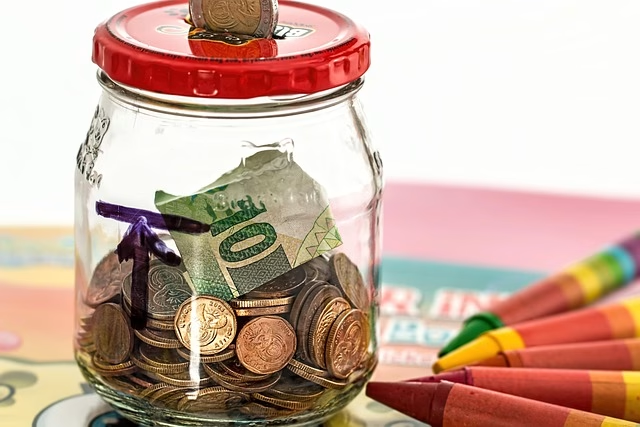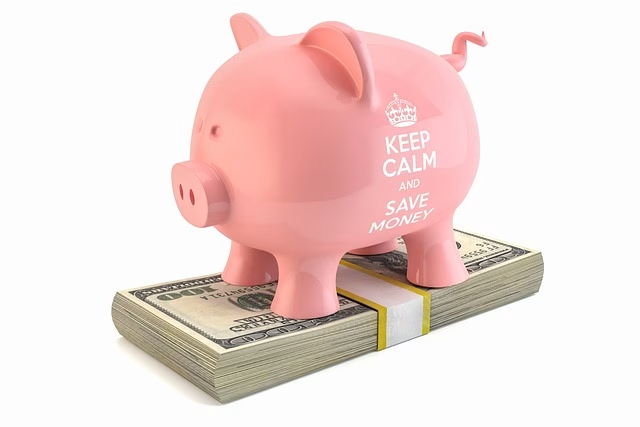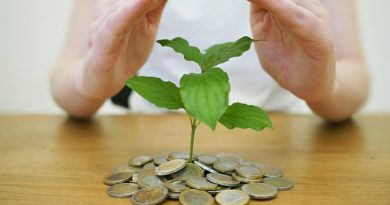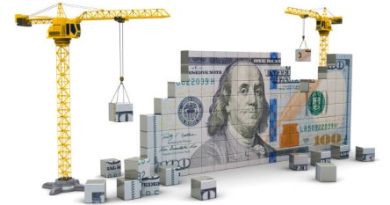Build an Emergency Fund Fast: 5 Simple Global Guides (2025)
Secure your future with 5 easy steps to build a global emergency fund. Save smart, cut expenses, and grow your financial safety net efficiently in 2025
In today’s unpredictable world, an emergency fund is your first shield against financial stress. It’s money set aside for sudden events like job loss, medical bills, urgent travel, or home repairs. Without it, many turn to high-interest debt or struggle to cover basic expenses.
For global citizens—expats, digital nomads, freelancers, and people in economies with fluctuating currencies—the challenge is bigger. According to the World Bank, nearly 40% of adults worldwide cannot cover a $400 emergency without borrowing. That makes building a dedicated safety net one of the smartest financial moves in 2025.
This guide will walk you through 5 simple strategies, a priority savings ladder, regional benchmarks, and the best global storage options for your emergency fund.

Guide 1: Start Small — Save Your First $1,000
The journey begins with a modest but powerful milestone: saving your first $1,000 (or local currency equivalent).
- Covers urgent needs like car repairs, medical bills, or travel emergencies.
- Adjust the target by region:
- Low-cost economies: $300–$500.
- High-cost cities (New York, London, Tokyo): $1,500–$2,000.
How to reach it:
- Automate small savings ($20, $50, $100 per paycheck).
- Cut unnecessary spending (streaming subscriptions, premium coffee, unused memberships).
- Focus on consistency—it’s a marathon, not a sprint.
Guide 2: Set Up Recurring Transfers
An emergency fund grows best when you pay yourself first.
- Automate transfers to a separate savings account.
- Use global fintech apps like Revolut, Wise, Monzo, or N26 for multi-currency saving.
- Choose high-yield savings accounts (4–5% APY in 2025) or money market accounts for better growth.
- Track progress with budgeting apps like YNAB, Mint, or Cleo.
Pro Tip: Keep your emergency fund in a separate account—out of sight, out of temptation.
Guide 3: Cut Back on Unnecessary Expenses
Global surveys show lifestyle inflation is the #1 savings killer. Trim fat from your budget:
- Cancel unused subscriptions.
- Cook at home instead of frequent takeout.
- Use public transit or carpool (especially cost-effective in Europe & Asia).
- Buy essentials at discount outlets or thrift stores.
Redirect freed-up cash directly to your emergency fund.
Guide 4: Sell Unwanted Items
Turn clutter into cash. Across the world, resale platforms make it easy:
- Global: eBay, Craigslist, Facebook Marketplace.
- Asia: Carousell, Shopee, Lazada.
- Tips:
- Take clear photos and write honest descriptions.
- Electronics, fashion, and furniture sell fastest.
- Dedicate 100% of proceeds to your emergency savings.
Guide 5: Use Tax Refunds or Extra Income
Windfalls are the perfect chance to boost savings:
- Direct deposit tax refunds into your emergency account.
- Channel bonuses, side hustles, or freelance income straight into savings.
- Even small amounts build momentum: $200 extra monthly = $2,400/year.
Step 1: Set Your Savings Goal
Aim for three to six months of living expenses in your local currency. Adjust the amount for cost-of-living differences between countries. Use budgeting tools and apps to track progress.rivermarkcu+1
Step 2: Open a Dedicated Account
Choose a global bank with secure, accessible savings options. Prioritize accounts with high interest and minimal fees, or digital wallets with international access.moniepoint
Step 3: Automate Contributions
Set up recurring transfers from checking to savings accounts. Automation ensures steady growth, even when busy or traveling.consumerfinance+1
Step 4: Prioritize and Cut Expenses
Analyze monthly spending worldwide. Prioritize high-impact areas like rent, food, and utilities. Adjust lifestyle to reduce non-essential costs and boost savings.moniepoint
Step 5: Reassess and Scale Up
Regularly review and adjust your fund as global expenses shift. Celebrate small milestones—first $1,000, then incremental increases. Rebalancing keeps your fund resilient and ready.investopedia+1
Smart Savings Tools
Leverage global digital platforms and AI budgeting tools to simplify tracking and management. Use AI-powered finance apps to forecast and automate savings (see: [Top 7 AI Tools in 2025 That Can Save You Time and Money]).
Read more on building your financial foundation:
Bonus: Aim for 3–6 Months of Expenses
Once you pass the $1,000 mark, set your ultimate target: 3–6 months of essential living expenses.
- Cover: housing, utilities, food, healthcare, insurance, transportation.
- Use bank statements to calculate monthly averages.
- Adjust for your situation:
- Salaried workers in stable economies: 3 months.
- Freelancers/expats in unstable economies: 6–12 months.
In regions with high inflation (Argentina, Turkey, Nigeria), keep part of your fund in USD or EUR.
Savings Priority Ladder: Step-by-Step Guide
Step 1 → Save Your First $1,000 (local equivalent)
│ Covers small emergencies, prevents debt.
│
Step 2 → Save 1 Month of Expenses
│ Housing, food, transport, healthcare.
│
Step 3 → Save 3 Months of Expenses
│ Strong buffer for job loss or illness.
│
Step 4 → Expand to 6 Months
│ Ideal for freelancers, expats, high-cost cities.
│
Step 5 → Aim for 9–12 Months (Advanced Goal)
Perfect for digital nomads, gig workers, or unstable economies.
Emergency Fund Needs by Region (2025 Guide)
| Region | Avg. Monthly Essentials | Starter Fund | Full Fund (3–6 Mo.) | Notes |
|---|---|---|---|---|
| U.S. & Canada | $2,500–$4,000 | $1,000 | $7,500–$24,000 | High medical + housing costs. |
| W. Europe (UK, Germany, France) | $2,000–$3,500 | €1,000 | €6,000–€18,000 | Rent in London/Paris is very high. |
| E. Europe (Poland, Romania) | $1,000–$1,800 | €500 | €3,000–€9,000 | Rising inflation (esp. energy). |
| Middle East (UAE, Qatar, Saudi) | $2,000–$3,000 | $1,000 | $6,000–$15,000 | Expats need longer coverage. |
| Asia – High Cost (Japan, Singapore, HK) | $2,200–$4,000 | $1,500 | $7,000–$20,000 | Rent + education costs are high. |
| Asia – Mid Cost (India, Vietnam, Philippines) | $600–$1,200 | $300 | $2,000–$6,000 | Medical costs can be unpredictable. |
| Africa (Nigeria, Kenya, S. Africa) | $500–$1,000 | $300 | $1,500–$6,000 | Currency risks → aim 6–12 months. |
| Latin America (Brazil, Mexico, Argentina) | $800–$1,500 | $400 | $2,500–$9,000 | Inflation & devaluation → keep USD/EUR reserves. |
Where to Store Your Emergency Fund (Global Options 2025)
- High-Yield Savings Accounts (4–5% APY)
- Safe, insured, highly liquid.
- Examples: Ally (U.S.), Marcus (U.K.), N26 (EU).
- Money Market Accounts & Funds
- Low-risk, slightly higher returns.
- Examples: Vanguard MMF, Fidelity Cash Reserves.
- Multi-Currency E-Wallets (for expats/nomads)
- Wise, Revolut, Monzo.
- Store 70% in local, 30% in USD/EUR for stability.
- Certificates of Deposit (CDs) / Time Deposits
- Higher interest for funds you won’t touch soon.
- Use a CD ladder for liquidity.
- Cash Buffer (at home)
- 1–2 weeks of local + USD/EUR for immediate use.
- Stablecoins (optional for volatile economies)
- USDT/USDC as hedge against inflation.
- Use regulated exchanges and secure wallets.
Decision Map: Where Should YOU Store It?
Do you move/travel across countries often?
│
├── YES → Multi-currency wallet (Wise, Revolut) + USD/EUR hedge
│
└── NO → Do you want max liquidity & safety?
│
├── YES → High-yield savings account
└── NO → Already have 3 months saved?
│
├── YES → Put extra in CDs/MMFs for better returns
└── NO → Focus on liquid savings first
Key Takeaways
- Start small, but start now. Your first $1,000 is the hardest but most important step.
- Build progressively. 1 month → 3 months → 6 months.
- Adjust for your lifestyle and region. High-cost cities and freelancers need more.
- Store funds smartly. Mix liquid accounts with stable reserves for safety.
An emergency fund is the foundation of financial resilience worldwide. Whether you’re in New York, Nairobi, London, or Manila, the principles remain the same: start small, automate, cut back, sell unused items, and direct windfalls to savings.
By using tools like global fintech apps, high-yield accounts, and even stablecoins in unstable economies, you can protect yourself from the unexpected. In 2025, the world is more unpredictable than ever—your emergency fund is the peace of mind that ensures you’re ready for whatever comes next.



